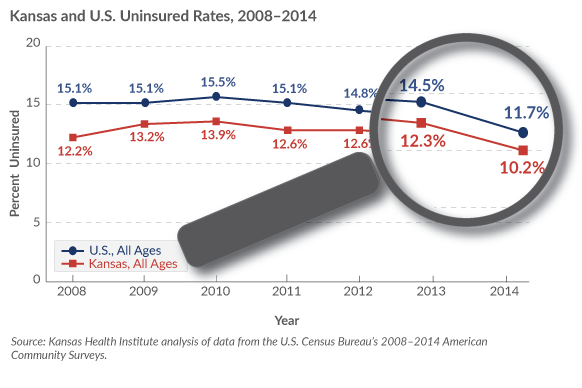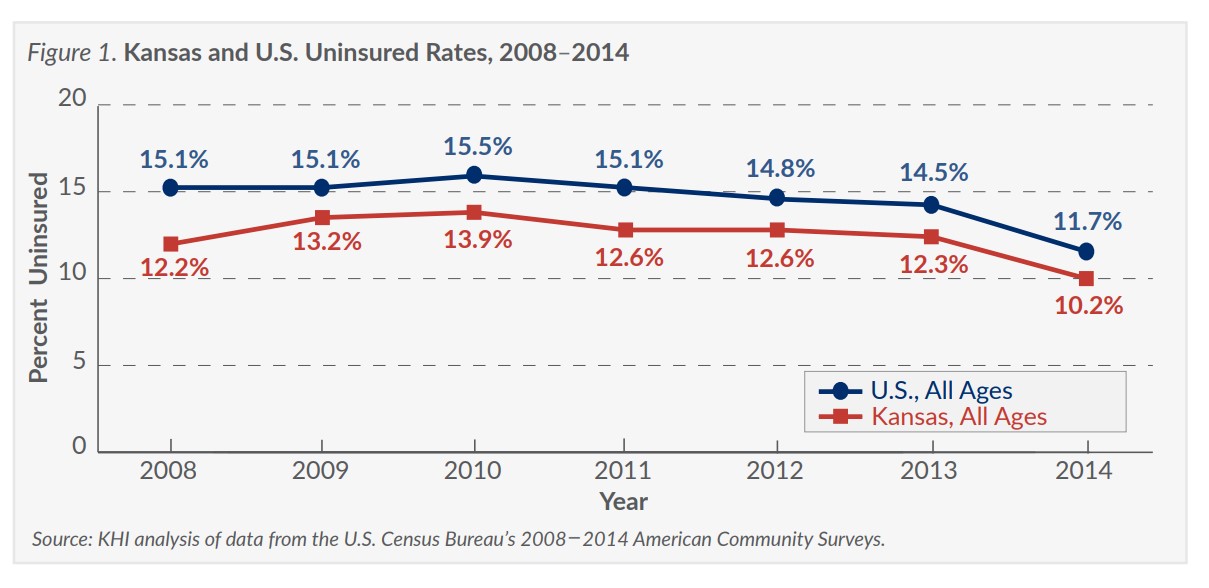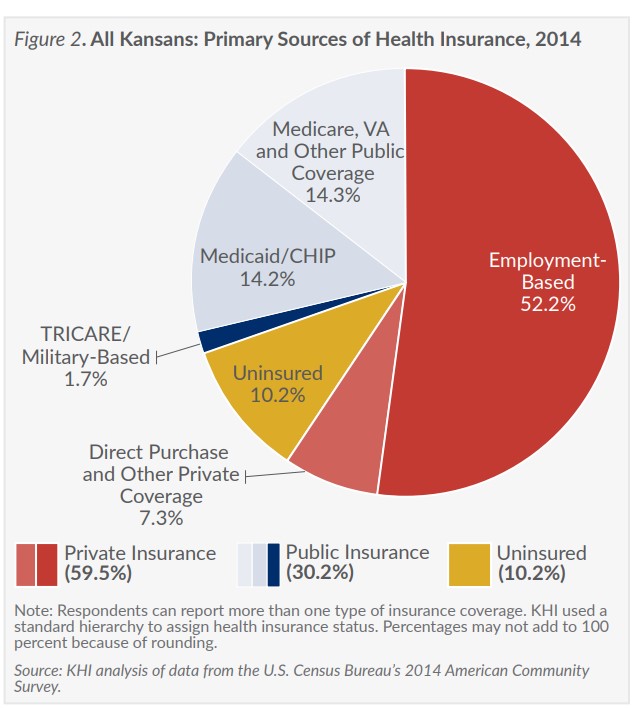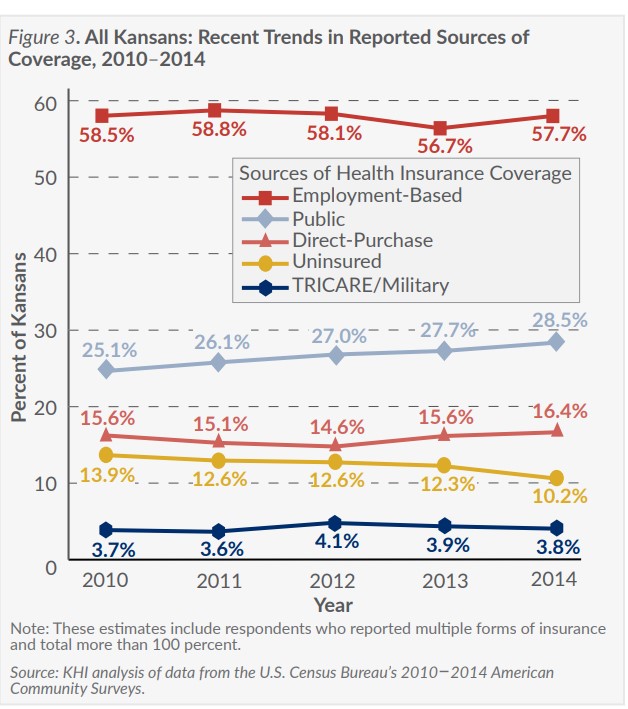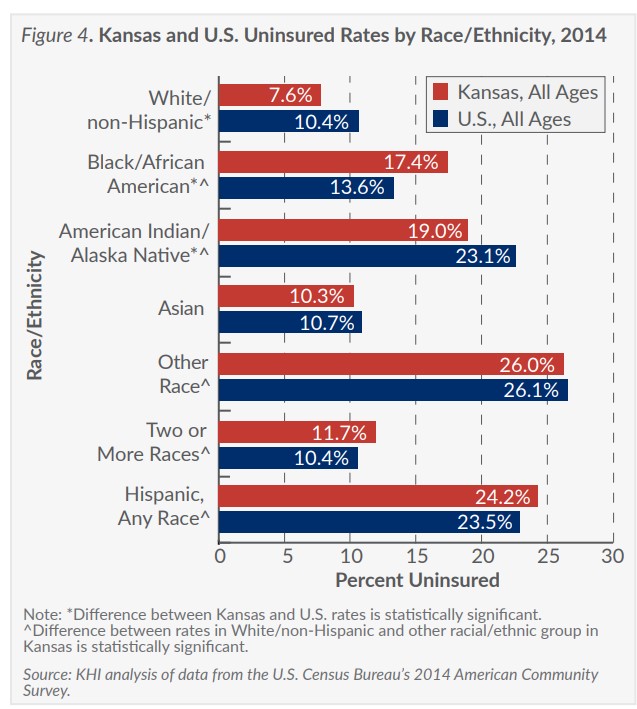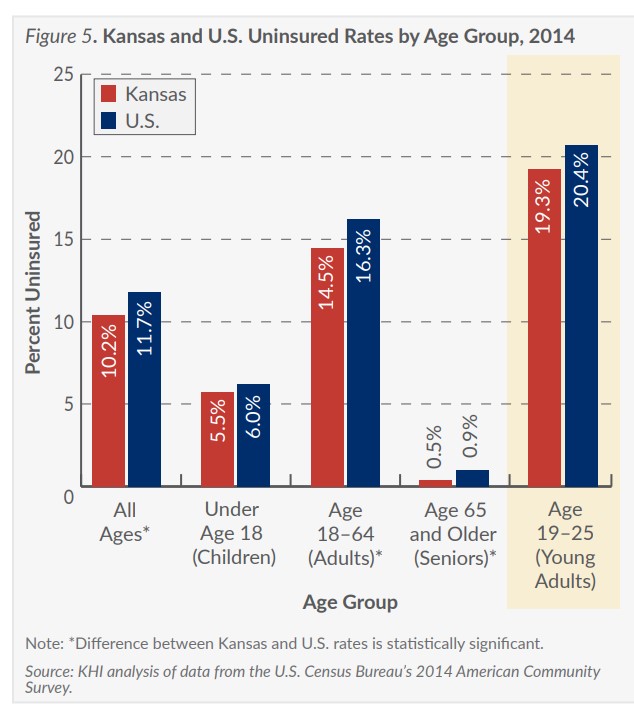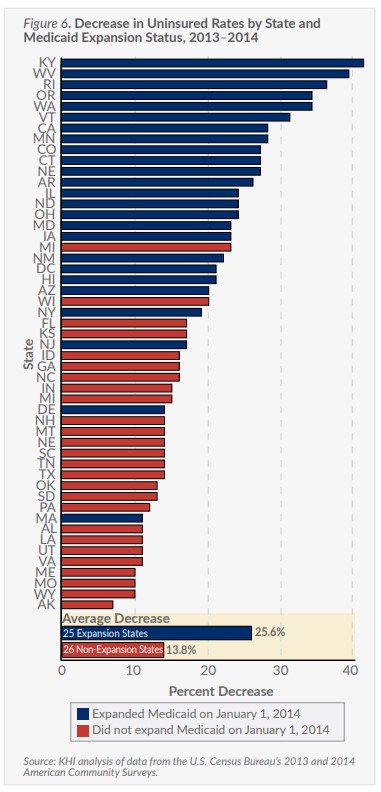Key Points
-
- The uninsured rates in both Kansas and the U.S. dropped significantly in 2014, which was the first full year of implementation of the major insurance expansion provisions of the ACA.
- Kansas no longer fares better than the nation as a whole for certain groups. Children and young adults in Kansas are no longer less likely to be uninsured than nationally. The gap between the uninsured rates of White, non-Hispanics and Black/African Americans in Kansas is higher than in any other state (7.6 percent compared to 17.4 percent, respectively).
- The increase in insurance coverage can be attributed to small increases in direct-purchase coverage (likely through the health insurance marketplace), employment-based coverage and an increase in public insurance.
- The decrease in the national uninsured rate is outpacing the decrease in Kansas. The average decrease in the uninsured rate between 2013and 2014 for Medicaid expansion states was 85.5percent greater than non-expansion states (25.6 percent vs. 13.8 percent, respectively).
The U.S. Census Bureau recently released data from the 2014 American Community Survey (ACS). This issue brief analyzes ACS health insurance coverage data, which reflect changes in insurance coverage for the first full year of implementation of the major health insurance expansion provisions of the Affordable Care Act (ACA).
